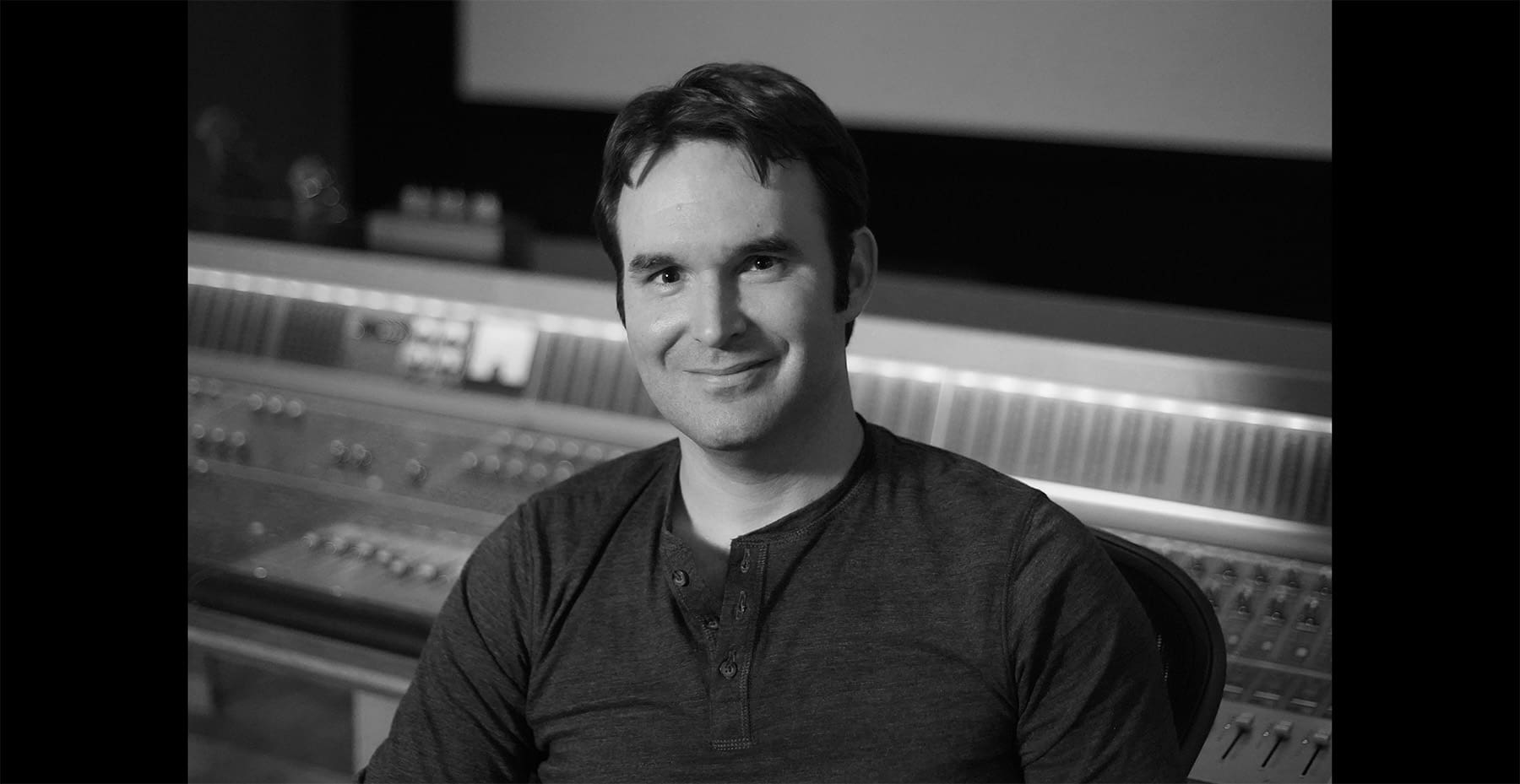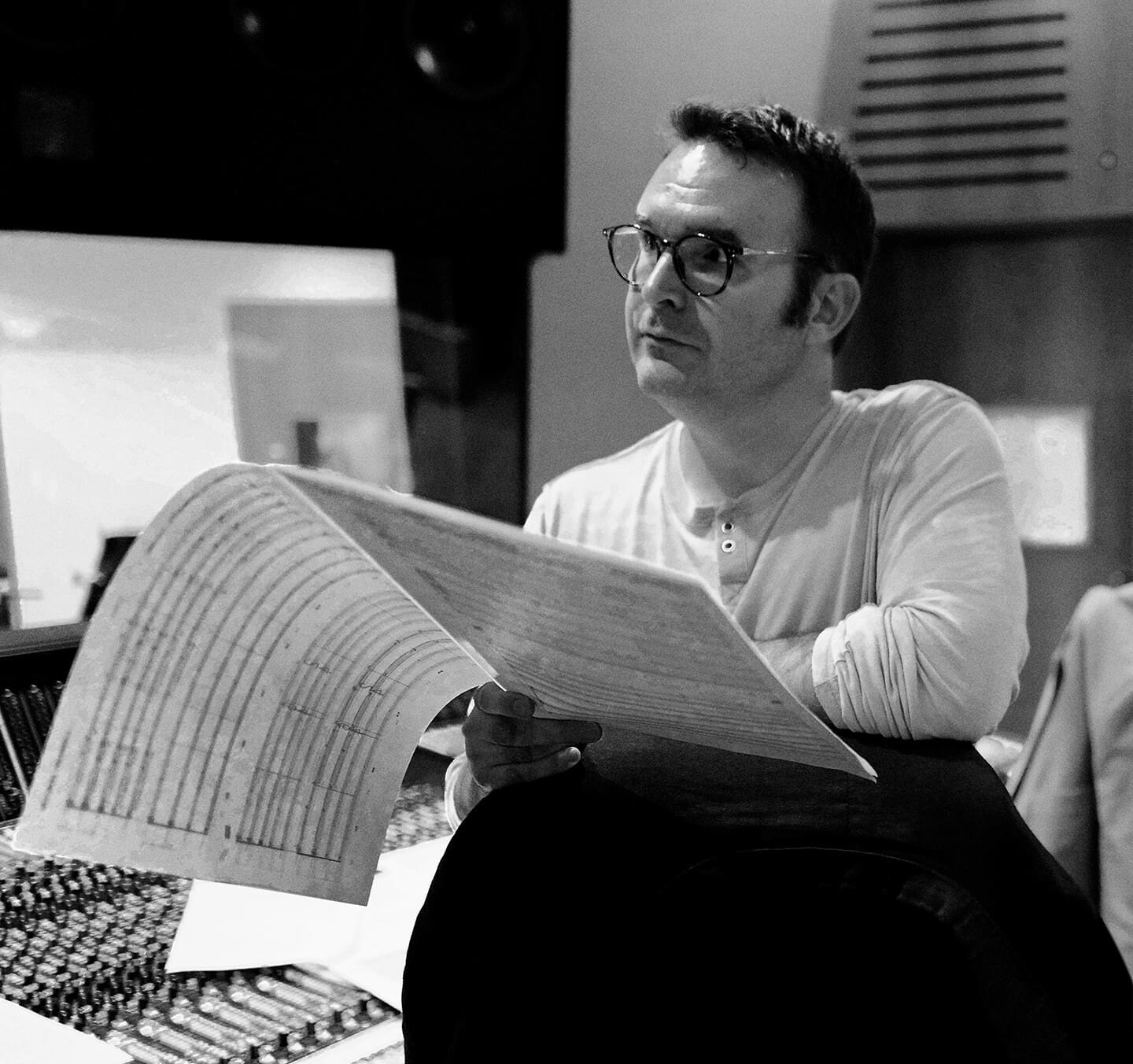
Emmy-winner composer Brandon Roberts has entered the Star Wars Universe.
With Andor Season 2, Roberts can now say he’s more than just a fan — he’s a composer for Star Wars.
Reflecting on the path that led him to this milestone, Roberts credits one iconic figure as his earliest inspiration.
“I think, like most composers at least my age, John Williams was the whole reason we got into music, and specifically Empire Strikes Back, which is probably still my favorite score ever written,” said Roberts.
That early love for cinematic music was just the beginning. Roberts’ musical journey continued to evolve as he explored different genres and experiences that would eventually shape his voice as a composer.
“Film music was a huge part of my things I listened to as a kid, but early on, I got into jazz and jazz guitar and Monterey Jazz Festival,” he said.
“I grew up in that area, so that was a huge part of my musical upbringing. I studied jazz, jazz guitar, and then eventually segued into the USC film scoring program, and that was when I was hooked. It was a no-brainer.”
That foundation in jazz and film scoring opened doors to key collaborations that would define the next phase of Roberts’ career.
“I was very lucky to have had a chance to orchestrate and do additional music for Bear McCreary (The Walking Dead), and then for, eventually for Marco Beltrami (the Scream franchise),” Roberts reminisced. “He [Betrami] and I have done a lot of stuff together over the years, and I’ve just been very, very blessed.”
But how did Roberts’ previous work rope him into being the composer of Andor Season 2?
It was through another key collaboration — this time with music editor and supervisor John Finklea. Roberts worked with Finklea with on Brad Pitt’s zombie epic World War Z and Prime Video’s adaptation of Tom Clancy’s Without Remorse.
“[Finklea] had worked on Season 1 of Andor, and we had worked together on going all the way back to World War Z, and we’ve maintained a friendship ever since,” Roberts said. And when they needed help on Season 2 of Andor, he threw my name in the hat.”
“He knew my style, and he thought it might be a good fit with what Nicholas Britell (Season 1’s composer) was doing,” Roberts said. “And it’s very hybrid, right? So the style of writing of Season 1 is very a mixture of orchestra and electronics, and that’s something I do a lot.”
After getting his name tossed around, Roberts met with brothers Tony Gilroy, the creator of Andor, and John Gilroy, an editor on Andor. After that, it was a perfect fit.
“I just kind of solely occupied the dream spot,” he said. “It was a long road to Star Wars, a wonderful one.”
When Roberts initially took on this huge project, he felt a massive fear factor he knew he’d have to put aside very quickly. This was easily accomplished thanks to his knowledge of the Star Wars Universe’s score plus his overall expertise from previous shows and films.
“I know the scores so backwards and forwards — from all the John Williams music, and I loved Nick Britell’s work on Season 1,” he said. “It’s a palette I felt comfortable writing in. And so I thought, I’m gonna have to create some sort of music continuity hat can bridge from Season 1 into Season 2, but then we have to also bridge into Giacchino’s music for Rogue One. So there was a lot of discussion between John Finklea and Tony Gilroy and I about where and how we would do that.”
Originally, Roberts said, they thought about the possibility of pushing the connection to Michael Giacchino’s Rouge One work into the last three episodes where they would start stripping out the electronics to make it more orchestral.

“If they decided to make it more orchestral,” Roberts said, “It would be more John Williams in style, more akin to what Giacchino was doing in Rogue One.” But in terms of actual John Williams’ thematic material, Roberts said he believes Britell and Tony Gilroy made an active decision not to use John Williams material.
This deliberate shift allowed Roberts to carve out a distinct musical identity for Andor while still respecting the sonic lineage of the Star Wars universe. It also gave him the freedom to lean into his own creative instincts and emotional sensibilities.
“Ironically, my favorite stuff to compose is actually very heartfelt and emotional and melodic,” Roberts stated. “So, it’s interesting when you look at my past projects, a lot of them are horror and suspense, which I love as well. I would say that a project like Andor needs to pull from every toolset that you have. So that’s why not getting this job when I was in my 20s was probably a very good thing because I have more experience and more tools in the tool belt.”
That breadth of experience became essential as Andor continued to evolve. Roberts found unique opportunities opened up for experimentation and a more textured soundscape.
“Because Andor could exist outside of Star Wars, you know, it might be like almost as a standalone, because there’s no lightsabers, and there’s no force usage, really.”
“It made sense, and it lent itself to that almost like a more industrial feel. So, we try to carry that over, obviously, into Season 2. But I will say John Williams’ presence is always there, and you’re always thinking about it, because he’s, you know, he’s literally a part of my childhood.”
When it comes to approaching the scoring for internal character struggle versus large-scale action and world-building scenes, Roberts always begins with a few simple questions.
“I find that I ask myself before writing a scene or composing the music for a scene, what is the focus point? So even if you have massive action happening on screen, is that actually the emotion that needs to be conveyed, or is it the drama of what is happening? Is it the internal situation of what a character that you’re seeing on screen is going through, versus Are you scoring the action itself?”
According to Roberts, these are questions that the composer and the filmmaker will discuss and sometimes argue over. At times, these creative debates and the questions Roberts would ask himself became essential in unlocking the emotional truth of a scene, helping to determine whether the score should heighten the visuals or cut against them for greater impact.
“My best work is when I’ve made a concerted decision to commit to one of those things. So is it about these TIE Fighters right now, or is it about the emotional journey of the pilot and so once you answer that question, I think you can really lean into that decision and make it very dramatic or very fun or very action-based.”
That clarity of purpose was particularly important for Andor, where scenes often operated on multiple narrative layers, all unfolding simultaneously. Roberts said this complexity demanded a score that could shift fluidly between intensity and restraint, often within the same sequence.
“There was a lot of tension, espionage, and even horror elements in Season 2 that we leaned into,” he said. “It was great. It was also wonderful to see how on-board Tony Gilroy and the team were for going pretty dark, and it was a pleasure.”
When asked if there’s a scene or sequence from Andor Season 2 where the music took a surprising turn in development, two moments immediately came to mind for Roberts.
“One is at the end of Episode 3, and then one is in Episode 6. And the reason I mention them is because I think they’re really unique situations in film scoring. And in both situations, one is the cutting back and forth between the Chandrilan wedding and then what is happening on Mina-Rao. And then in episode six, what is happening on Coruscant, the heist on Coruscant, and cutting back to what’s happening on Ghorman.”
What makes these moments is the way Roberts has the soundtrack function within the storytelling. In both episodes, Roberts scored sequences that rapidly alternate between dramatically different scenes and tones.
“This was a unique situation, in which, in both cases, you’re cutting back and forth between score and source music over and over and over again,” he said. “So obviously, you have the wedding and the Mon Mothma dance and all these kinds of things that are happening in episode 203, and it was a really unique challenge to make the score segue seamlessly into that, then bounce back out.”
The solution, as Roberts describes it, required careful technical and creative choices.

“It was a great challenge in trying to figure out, well, how can we make this feel organic like we’re suddenly shooting into diegetic music from score, and what we found was having similar tempos and similar keys, and then finding places to dovetail and maybe pre lap sounds that haven’t happened yet. We used every single thing we could to make that all feel like a seamless back and forth, but then simultaneously, they are also increasing intention and drama.”
Ultimately, Roberts reflects on the sequences that go on for about 10 minutes as standout moments in the season’s musical landscape. “And so I know, I won’t claim it’s the first time it’s been done in any way, but it was such a highlight of both of those episodes musically that that was, that was a very unique challenge.”
Those extended musical stretches allowed Roberts to fully explore dynamic range and emotional nuance in a way few modern series offer, turning music into an active narrative force rather than just support.
“In terms of emotional arcs, I kind of went into it almost as a fan and Tony Gilroy has, I was always looking forward to seeing what he was going to do with the characters because you don’t really know like he will take left turns, and he will do unexpected things. And he’s such an accomplished writer that I was just surprised to see what was going to happen. I have my favorites.”
That sense of unpredictability made scoring each episode exhilarating, as Roberts had to anticipate and reflect surprising character shifts with equal nuance.
“There were certain situations that didn’t end the way I maybe had hoped would happen, but everything makes sense,” Roberts contined. “Tony Gilroy has that plot in the palm of his hands. He knows exactly what he’s doing, so everything makes sense.”
Even when the story pulled the rug out, Roberts embraced the twists, finding power in letting the music respond honestly to the emotional fallout.
“In terms of the music, I think for me, maybe the highlight would have been, let’s say what happens in Ghorman, like that whole Ghorman experience is so rewarding from a just a drama standpoint, in the music,” he said.
It was an all-systems-go moment where story, performance, and score collided perfectly, letting Roberts dial up the emotional intensity in full force.
“Overall, I just find the Andor journey so cool,” Roberts said. “I know there’s debate by people, is it Star Wars, is not, to me as a massive Star Wars fan, I love the fact that they found a neat niche in there that works without, you know, without lightsabers and without force usage. I loved it.”

